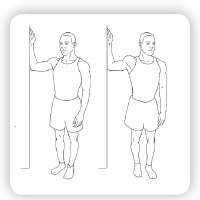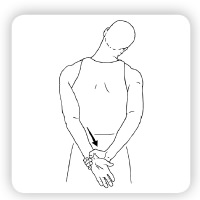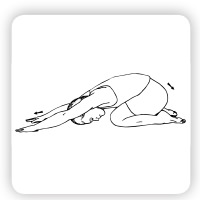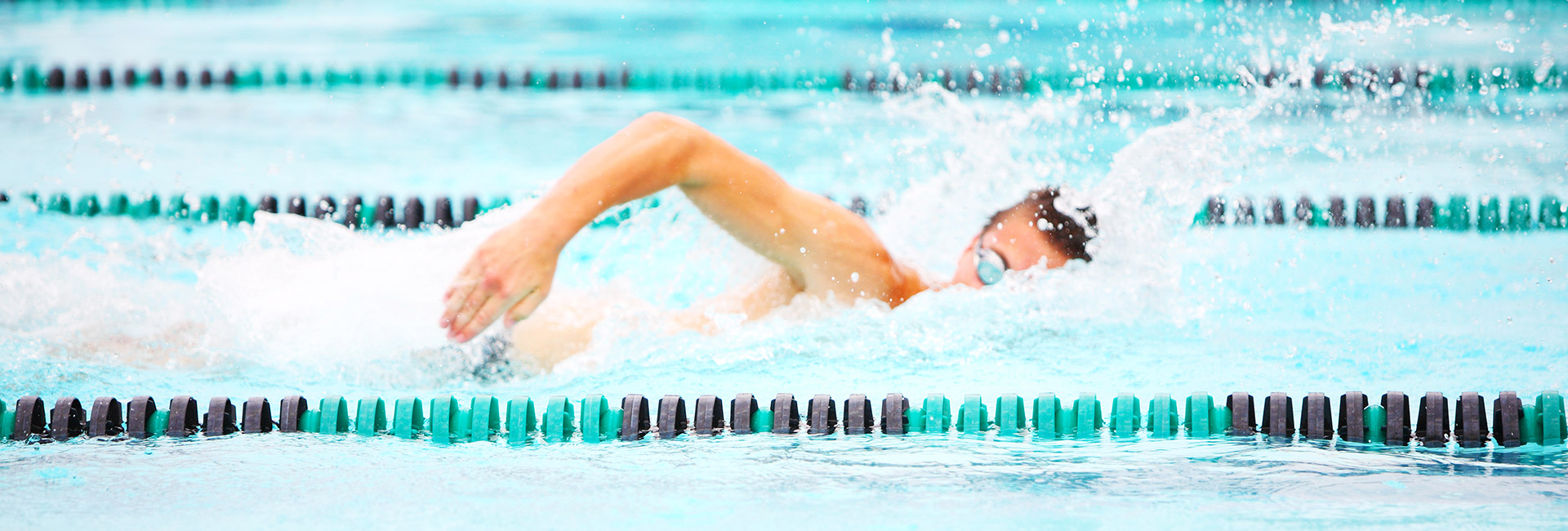As the seasons change and the sun makes its grand appearance, people pull out their swim suits and start jumping into the pool for fun and for exercise. If you have not prepared your body for swimming laps, however, you might find yourself sore after starting a new exercise adventure.
Free-style swimming can be very demanding on the upper body and requires large force production from the pectoralis group, latissimus dorsi, and upper trapezius.1 These muscles often become really tight in swimmers and contribute to poor posture with forward shoulders, which can lead to shoulder pain if not properly addressed. To get the most out of stretching, prepare for your swim session with a dynamic warm-up, and only perform static stretching after a workout, especially if the workout was at a high intensity. This will help improve flexibility with less likelihood of contributing to injury.2
Swimmer shoulder stretches
Those who swim, competitively or recreationally, sometimes wonder, “Should I stretch after swimming?” The simple answer is, “yes.”
Below are three stretches to perform after swimming sessions to help prevent shoulder pain. Generally, all shoulder stretches should be held for at least 30 seconds to improve flexibility.3 These stretches can be performed for several repetitions. If you are experiencing pain related to swimming, contact your local physical therapist for a more individualized evaluation and treatment plan.

- Doorway Stretch: Stand, palm against door frame and elbow bent at 90º. Turn body away from fixed hand allowing shoulder to come forward. Hold for 30 seconds. Relax and repeat 2-3 times.

- Upper Trapezius Stretch: Stand, wrist of one arm clasped by other arm behind back. Pull arm downward with clasping arm. For a greater stretch tilt head toward pulling-side shoulder. Hold for 30 seconds. Relax and repeat 2-3 times.

- Child’s Pose Stretch: From kneeling position, slide arms forward while pushing buttocks toward floor. Hold for 30 seconds. Relax and repeat 2-3 times.
If you have any questions, have pain preventing you from enjoying your swimming sessions, or are interested in more personal and specific programs, please visit our clinic locator here.
To learn more about other beneficial programs for the swimmer, such as dryland training, reach out to your local clinic.
Resources:
1 – “Swimmer’s Shoulder”: Background, Epidemiology, Functional Anatomy. Web. 30 Mar. 2016.
2 – Behm DG and Chaouachi A. A review of the acute effects of static and dynamic stretching on performance. Eur J Appl Physiol. 2011. Epub ahead of print. March 4, 2011.
3 – Bandy WD, Irion JM, Briggler M. “The Effect of Time and Frequency of Static Stretching on Flexibility of the Hamstring Muscles.” Physical Therapy. 1997 Oct; 77(10):1090-1096. Web. 04 April. 2016.
We look forward to being a part of your healthcare team.
From injury recovery to movement and performance enhancement, patient success is our passion. Our therapists are committed to the application of evidence-based treatment techniques to ensure you experience the best in rehabilitation and preventative care and see progress with every visit.

